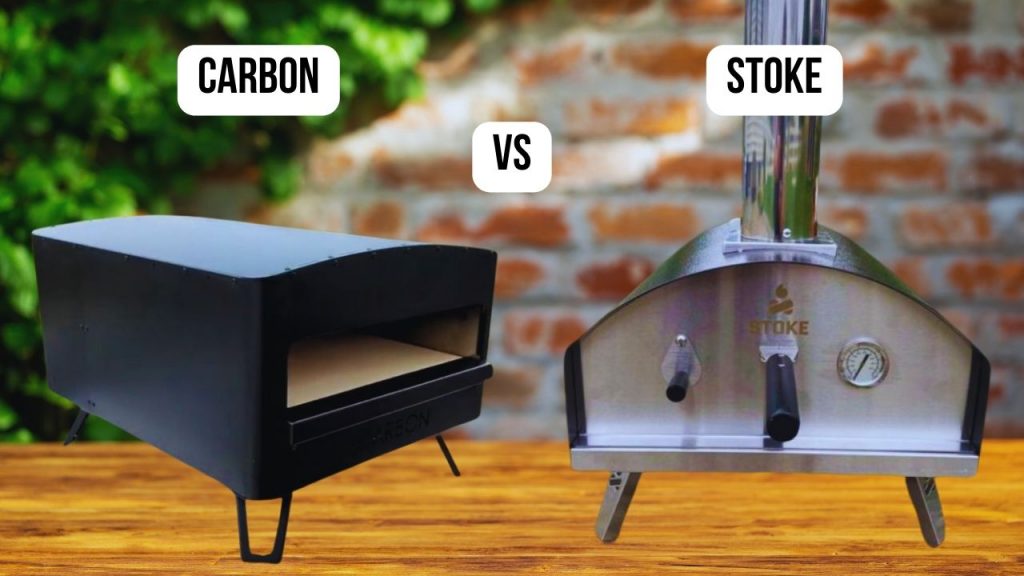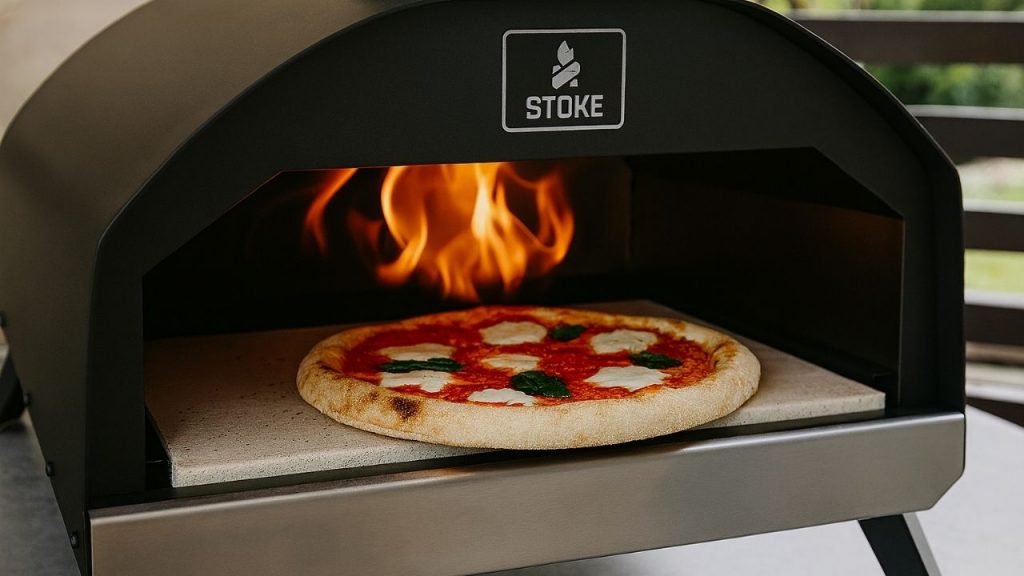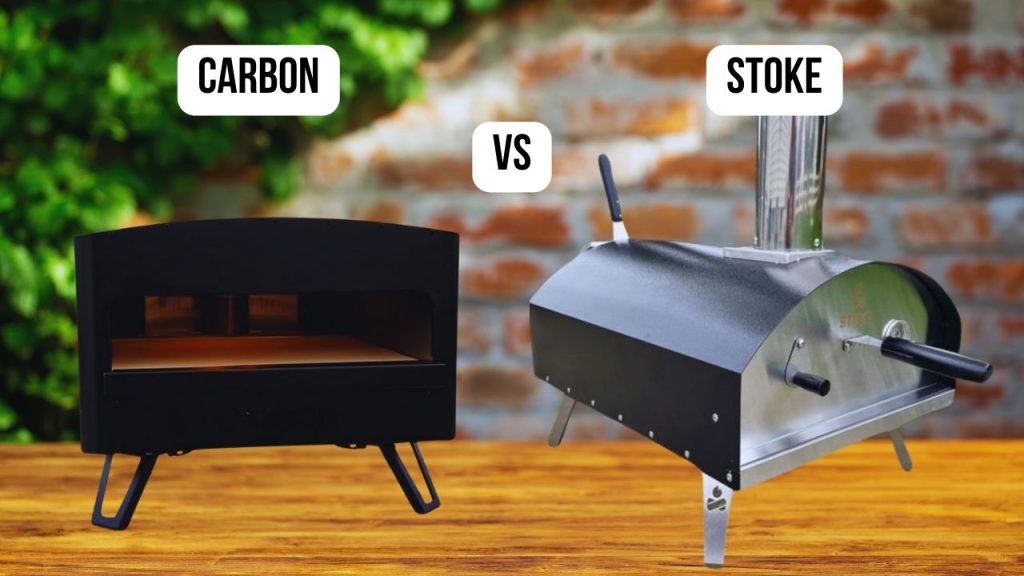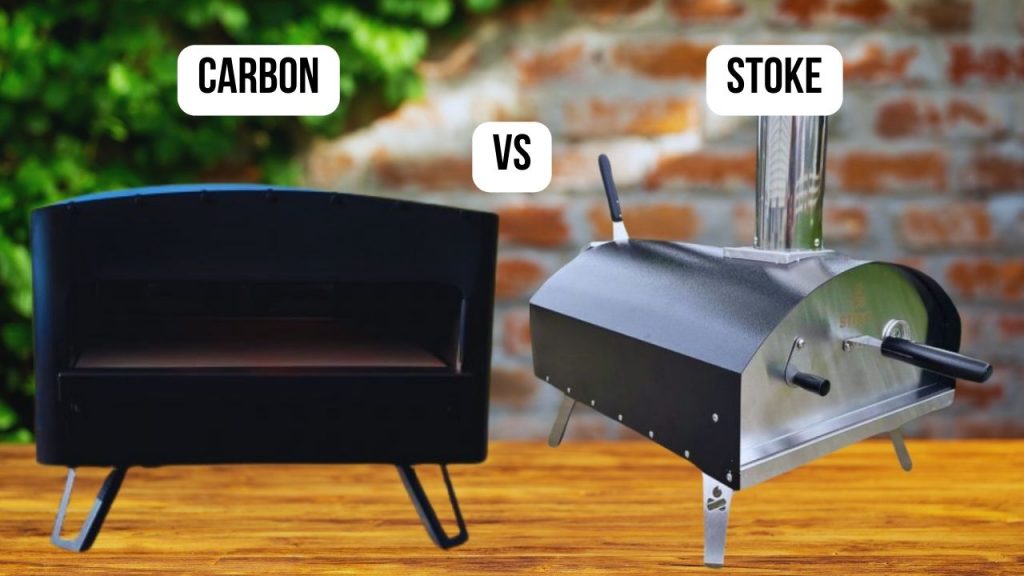As a restaurant chef with over 10 years of experience at my kitchen at Dequte Restaurant LironBoylston, I’ve had the opportunity to test a wide range of pizza ovens in both professional and home settings. In this article, I’ll compare two models I’ve personally used in my kitchen: the Carbon pizza oven and the Stoke pizza oven. I tested them side by side to evaluate their quality and materials, temperature control, shape, first-time usage impressions, power source, size, ease of cleaning, and most importantly, I conducted a real pizza cooking test to see how quickly and how well each oven performs.
If you’re interested in the step-by-step breakdown of my pizza oven testing process, feel free to check out my separate article that goes into detail about how I test each oven.
The Carbon oven is a sleek, high-performance dual-fuel oven built for serious pizza lovers who want restaurant-quality results at home.
The Stoke oven, on the other hand, is a user-friendly, stylish outdoor oven that offers great value and solid performance for casual pizza nights.
I’ve compared Carbon and the Stoke in detail in this article, using my own test results.
Please note: this article includes referral links. If you decide to purchase one of these ovens, using my links helps tremendously to keep this blog alive. I may earn a small commission at no extra cost to you — and I genuinely appreciate your support!

Carbon VS Stoke: Quality and Materials
| The Carbon Pizza Oven is built with stainless steel and a rust-resistant coating. Its design includes firebricks for heat retention and a solid, premium feel. It reminds me of Bertello’s robust construction. |
The Stoke Pizza Oven feels average in material quality. While functional, it lacks the durability and heaviness of high-end ovens. The metal tends to rust faster, and paint may peel at high heat.
|
Carbon VS Stoke: Temperature Control
| Carbon stands out with dual burners (upper and lower), offering precise control. It consistently reaches 950–1000°F, allowing flexibility for any cooking style. |
Stoke claims to reach 900°F, but in our test it only reached 700°F after 45 minutes. Temperature consistency is a common issue reported by users.
|
Carbon VS Stoke: Shape
| Carbon’s shape is efficient and functional. The interior layout allows even heat and good flame exposure, especially with its upper burner placement. |
Stoke’s design includes a large wall between the flame and stone, which acts as a heat buffer, often preventing optimal temperature buildup.
|
Carbon VS Stoke: First-Time Usage Impressions
| Setting up the Carbon oven was easy, with collapsible legs and intuitive burner dials. I appreciated the thoughtful build and fast learning curve. |
Stoke was also easy to assemble in under 10 minutes. However, I had to experiment a few times to understand its heating behavior and baking sweet spot.
|
Carbon VS Stoke: Power Source
| The Carbon Pizza Oven uses propane or natural gas, providing consistent heat without the hassle of refueling wood. |
The Stoke Oven I tested was wood-fired, which adds flavor but requires more effort, longer heat-up time, and constant monitoring.
|
Carbon VS Stoke: Size
| Carbon fits pizzas up to 15″ and has enough room for small dishes side-by-side. Despite being portable, it offers solid cooking space. |
Stoke is more compact at 13″, lighter at 40 lbs, and better for tight outdoor spaces. However, it limits the pizza size and cooking volume.
|
Carbon VS Stoke: Ease of Cleaning
| Carbon includes a special cleaning brush, and its firebrick floor wipes clean easily. The stainless interior also simplifies post-cook cleanup. |
Stoke is straightforward to clean thanks to removable components. But since it uses wood, it produces more soot and requires deeper cleaning more often.
|
Pizza Cooking Test: Carbon vs. Stoke

The Carbon heated up impressively fast — it took just 10–15 minutes for the pizza stone to reach around 740–760°F. I started with a classic Margherita pizza to test performance. On my second attempt (after letting the stone heat up properly), the pizza was ready in just 80–90 seconds. The crust had a perfect char, the edges browned evenly, and the underside had a firm, golden texture with no burning. The melted cheese and sauce came together beautifully, giving that pizzeria-quality flavor with a slightly smoky finish despite using propane.
The Stoke took longer to get going — it needed around 45 minutes of preheating to hit a max of 700°F. I also tested it with a Margherita pizza. The top cooked nicely and the cheese melted well, but the bottom crust was undercooked, lacking that signature crunch. The pizza took over 2 minutes to bake, and while the taste was still decent thanks to the wood-fired smokiness, it didn’t quite match the texture and balance I got from the Carbon.
Both ovens produced tasty pizzas, but the Carbon Pizza Oven delivered better heat retention, faster cook time, and a more balanced, restaurant-quality result in our Margherita test.
How We Tested

As a restaurant chef with over 10 years of hands-on experience at Dequte Restaurant LironBoylston, I’ve used dozens of pizza ovens in both commercial and home settings. For this comparison between the Carbon Pizza Oven and the Stoke Wood-Fired Pizza Oven, I conducted real-world cooking tests under the same conditions to ensure a fair assessment.
Both ovens were tested side by side in my outdoor prep area. I timed their preheat durations, measured internal stone temperatures using an infrared thermometer, and cooked identical Margherita pizzas in each oven to observe heat distribution, texture, and taste.
Beyond performance, I evaluated:
-
Build quality and materials
-
Ease of assembly and setup
-
Temperature control accuracy
-
Portability and size
-
Cleaning process after use
While both ovens have their strengths, I focused on how they handle actual cooking scenarios, not just technical specs. For those interested in the full breakdown of my testing process — including tools, methods, and detailed steps — I’ve published a dedicated article explaining exactly how I test pizza ovens.
Final Thoughts

At the end of the day, the choice between the Carbon Pizza Oven and the Stoke Wood-Fired Pizza Oven comes down to your personal cooking style and what matters most to you — whether it’s faster heating, dual burners, or the flavor of wood-fired cooking. Both ovens have their strengths, and I’ve enjoyed using each in my kitchen.
If you decide to buy one, I’d really appreciate you using my referral links below. I earn a small commission at no cost to you, and it tremendously helps support my blog and the content I share.
Thanks for reading and happy pizza-making!
Don’t skip the list of today’s best pizza ovens.



